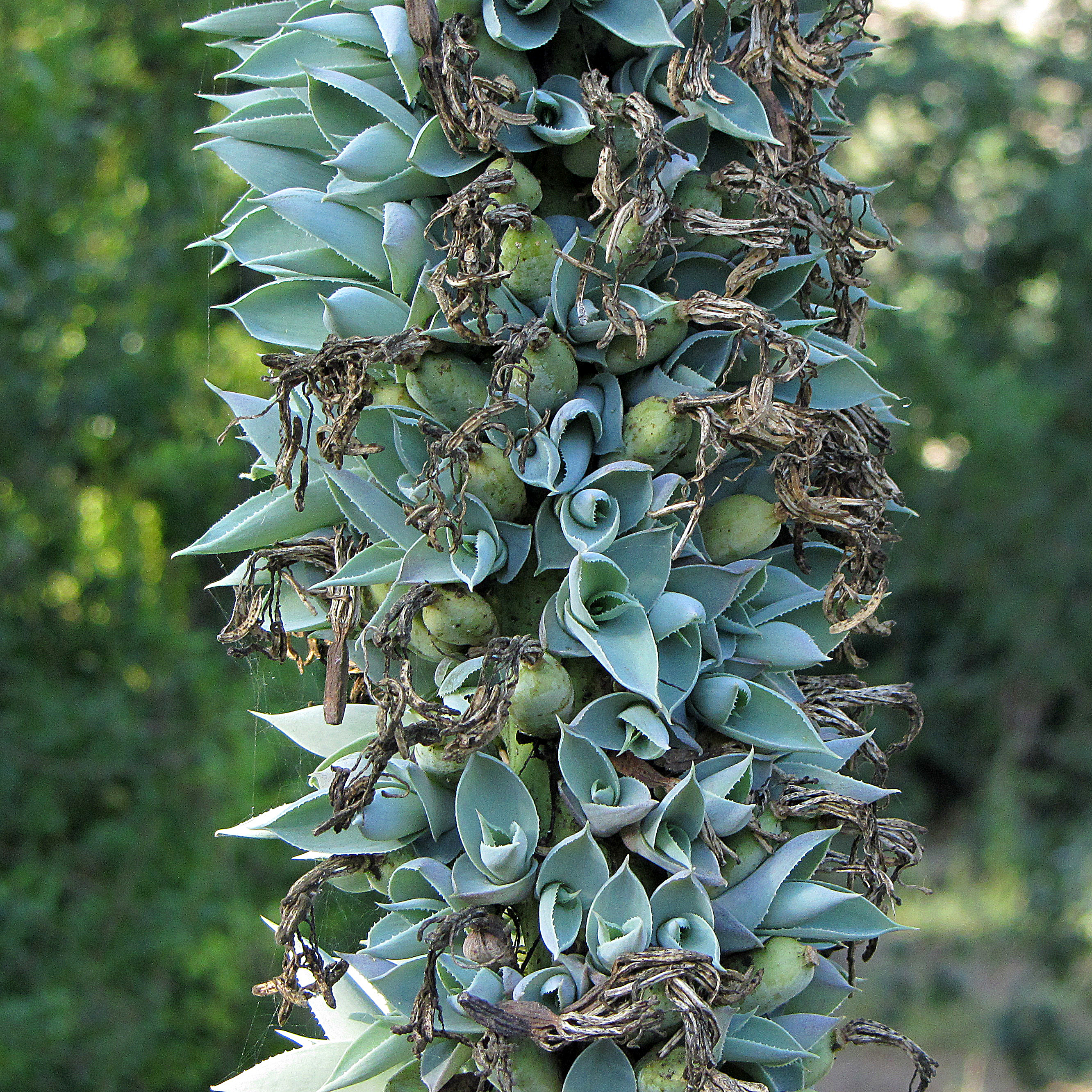Bulbils on:
[Wikipedia]
[Google]
[Amazon]
A bulbil (also referred to as a bulbel, bulblet, and/or pup) is a small, young plant that is reproduced vegetatively from axillary buds on the parent plant's stem or in place of a flower on an

 Within Agavoideae, bulbils develop on the
Within Agavoideae, bulbils develop on the
/ref> * '' Homeria breyniana'' * '' Kalanchoe daigremontiana'' * '' Lithophragma glabrum'' * '' Leskeaceae'' nervosa Myr. var. bulbifera * '' Lilium bulbiferum'' * '' Lilium lancifolium'' * '' Oxalis inaequalis'' * '' Pinellia ternata'' * '' Saxifraga cernua'' * '' Woodwardia radicans''Woodwardia radicans with costal bulbils
/ref>
inflorescence
In botany, an inflorescence is a group or cluster of flowers arranged on a plant's Plant stem, stem that is composed of a main branch or a system of branches. An inflorescence is categorized on the basis of the arrangement of flowers on a mai ...
. These young plants are clones of the parent plant that produced them—they have identical genetic material. The formation of bulbils is a form of asexual reproduction
Asexual reproduction is a type of reproduction that does not involve the fusion of gametes or change in the number of chromosomes. The offspring that arise by asexual reproduction from either unicellular or multicellular organisms inherit the f ...
, as they can eventually go on to form new stand-alone plants.
Although some bulbils meet the botanical criterion to be considered a true bulb, there are a variety of different morphological forms of bulbils, some of which are not considered to be bulbs. Hence the reason for distinction between bulbs and bulbils. For example, some bulbous plant groups, like onions and lilies, produce bulbils in the form of a secondary, small bulb. Onion and lily bulbils meet the botanical criterion to be labeled a true bulb. All bulbils produced by bulbous plants are to be considered bulbs, but not all bulbils are to be considered bulbs. For example, other non-bulbous plant groups, like various genera within the subfamily Agavoideae, are well known to produce bulbils that do not actually meet the botanical criterion to be considered a bulb.
Bulbils in Agavoideae
 Within Agavoideae, bulbils develop on the
Within Agavoideae, bulbils develop on the inflorescence
In botany, an inflorescence is a group or cluster of flowers arranged on a plant's Plant stem, stem that is composed of a main branch or a system of branches. An inflorescence is categorized on the basis of the arrangement of flowers on a mai ...
of a blooming plant. The development of bulbils in this group is common in approximately 17 '' Agave'' species, all '' Furcraea'' species, and has been somewhat documented in '' Yucca'' (particularly '' Yucca elata''), and '' Hesperaloe''. Bulbils can develop quite quickly, many do so after the flowers die, and can persist on the inflorescence for around one to two years before falling to root in the ground. While still on the parent plant, many species develop adventitious roots and can grow to sizes ranging from 5 to 15 centimeters, if left to mature.
Examples
* '' Aconitum columbianum'' ssp. viviparum * '' Agave'' * '' Allium vineale'' * '' Allium paradoxum'' * ''Allium'' × ''proliferum'' (tree onion) * '' Allium sativum'' (garlic) * '' Amorphophallus bulbifer'' * '' Asplenium bulbiferum'' * '' Bistorta vivipara'' * '' Cardamine bulbifera'' * '' Cicuta bulbifera'' * '' Claytonia sibirica'' L. var. bulbifera * '' Costus spiral'' * '' Cynorkis uncata'' * '' Cystopteris bulbifera'' * '' Cyperus alternifolius'' * '' Dentaria bulbifera'' * '' Dodecatheon hendersonii'' A. Gray ssp. hendersonii * '' Dioscorea bulbifera'' * '' Eleocharis vivipara'' * '' Ficaria verna'' ssp. bulbifera * '' Furcraea'' hexapetala Insurance against reproductive failure in a semelparous plant, Table 1/ref> * '' Homeria breyniana'' * '' Kalanchoe daigremontiana'' * '' Lithophragma glabrum'' * '' Leskeaceae'' nervosa Myr. var. bulbifera * '' Lilium bulbiferum'' * '' Lilium lancifolium'' * '' Oxalis inaequalis'' * '' Pinellia ternata'' * '' Saxifraga cernua'' * '' Woodwardia radicans''
/ref>
See also
* PropaguleReferences
{{Reflist Plant morphology Plant reproduction